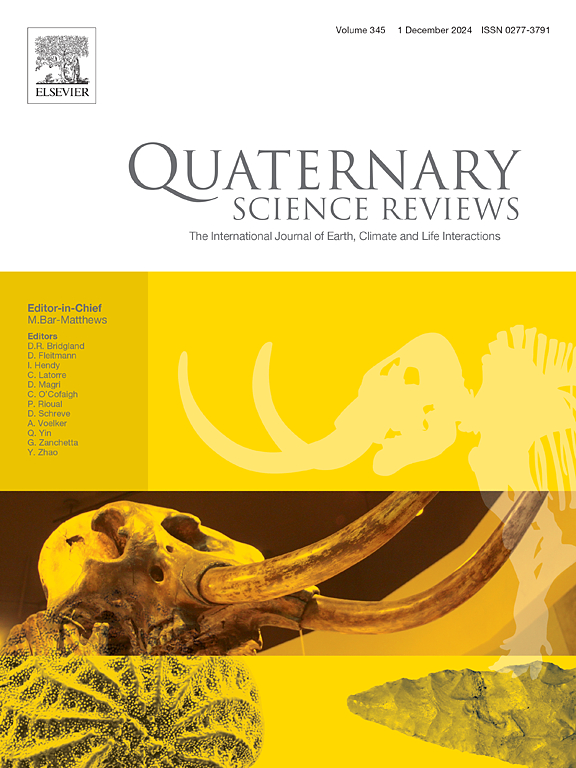Nonlinear diatom responses to millennial-scale climate-mediated terrestrial-aquatic interactions in a treeline lake on the Tibetan Plateau
IF 3.2
1区 地球科学
Q1 GEOGRAPHY, PHYSICAL
引用次数: 0
Abstract
Understanding the complex, nonlinear responses of aquatic ecosystems to climate-driven terrestrial-aquatic interactions is crucial for identifying the mechanisms underlying ecosystem dynamics. This study investigates the diatom community changes over the past 20 kyr in Cuoqia Lake, a treeline lake on the southeastern Tibetan Plateau. By integrating fossil diatom assemblages with cladoceran, geochemical, and sedimentological proxies, we reveal how differential mechanisms influenced diatom responses from post-glacial lake formation to early Holocene treeline shifts. Our results indicate abrupt, phase-dependent shifts in diatom and cladoceran communities during major climatic transitions, particularly at the Late Glacial/Holocene boundary. These regime shifts were likely driven by cascading effects of glacial retreat, soil development and subsequent increases in organic matter inputs associated with climate warming and treeline migration. Notably, while diatoms responded quickly to initial climate warming, cladocerans exhibited a delayed response, reflecting its greater sensitivity to catchment vegetation stabilization. These findings highlight the attendant changes in climate, vegetation, and lake ecosystems on millennial time scales, illustrating the tight biogeochemical coupling between terrestrial succession and lake dynamics during glacial retreat and landscape colonization. This study offers critical insights into the mechanisms behind primary succession in alpine lake ecosystems and provides a valuable framework for understanding the ecological impacts of ongoing and future climate warming.
求助全文
约1分钟内获得全文
求助全文
来源期刊

Quaternary Science Reviews
地学-地球科学综合
CiteScore
7.50
自引率
15.00%
发文量
388
审稿时长
3 months
期刊介绍:
Quaternary Science Reviews caters for all aspects of Quaternary science, and includes, for example, geology, geomorphology, geography, archaeology, soil science, palaeobotany, palaeontology, palaeoclimatology and the full range of applicable dating methods. The dividing line between what constitutes the review paper and one which contains new original data is not easy to establish, so QSR also publishes papers with new data especially if these perform a review function. All the Quaternary sciences are changing rapidly and subject to re-evaluation as the pace of discovery quickens; thus the diverse but comprehensive role of Quaternary Science Reviews keeps readers abreast of the wider issues relating to new developments in the field.
 求助内容:
求助内容: 应助结果提醒方式:
应助结果提醒方式:


